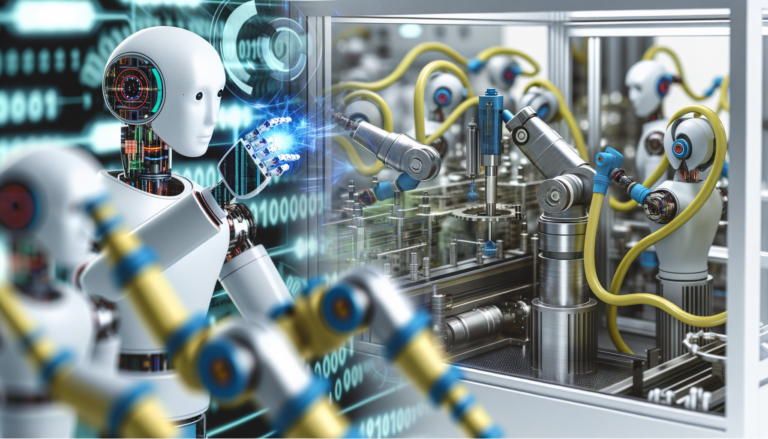Introduction
The accelerating development of Natural Language Processing (NLP) poses unique challenges for deploying models that are both current and contextually deep. Retrieval-Augmented Generation (RAG) and fine-tuning offer two contrasting yet complementary approaches critical to this discourse. While RAG enables real-time data integration, expanding model comprehension beyond pre-trained knowledge, fine-tuning refines models to excel in specific domains. Each chapter examines these methodologies in depth, shedding light on when and why developers should opt for one over the other, to ensure their language models are at the forefront of innovation.
Contents of Table
Chapter 1: RAG And Fine Tuning Comparision: Methods and Mechanisms
1. Exploring RAG and Fine-Tuning: A Technological Contrast
2. Economic Dynamics: Exploring RAG and Fine-Tuning Strategies
3. Geopolitical and Societal Dynamics in RAG and Fine-Tuning Approaches
Chapter 2: RAG And Fine Tuning Comparison: Application and Performance Insights
1. Technological Foundations: Bridging Real-Time Data and Task Precision in NLP
2. Cost and Resource Efficiency in RAG And Fine Tuning: An Economic Perspective
3. Navigating Societal and Geopolitical Dimensions in RAG and Fine Tuning
RAG And Fine Tuning Comparision: Methods and Mechanisms

1. Exploring RAG and Fine-Tuning: A Technological Contrast
Understanding the technological nuances between Retrieval-Augmented Generation (RAG) and fine-tuning methods is essential in NLP applications. RAG operates through a dynamic process of knowledge base creation, semantic retrieval using embedding models, and context augmentation by infusing retrieved documents into the model’s prompts. It exemplifies a vibrant system designed to access and process real-time data effectively. Conversely, fine-tuning modifies a model by adjusting its parameters via backpropagation on domain-specific data, enabling the internalization of intricate patterns and specialized terminology. This approach thrives on established datasets, prioritizing precision over versatility. While RAG requires the integration of sophisticated databases and hybrid search algorithms, fine-tuning demands robust computational resources for model training. Explore further with RAG insights. By acknowledging these distinct mechanisms, stakeholders can adeptly choose the optimal method based on their specific technological needs and contextual requirements.
2. Economic Dynamics: Exploring RAG and Fine-Tuning Strategies
Both Retrieval-Augmented Generation (RAG) and fine-tuning reflect distinct economic dynamics in AI model enhancement. RAG presents a cost-efficient approach by leveraging existing models and external learnings, making it tantalizing for businesses targeting scalable solutions. Integrating external databases allows real-time updates, reducing retraining costs, which positions RAG as a financially attractive method for rapidly changing sectors.
In contrast, fine-tuning, while resource-intensive, offers precision and accuracy that is indispensable for niche markets. The unique specificity gained improves model performance, thus increasing user satisfaction and engagement. However, per the Retrieval-Augmented Generation Insights, the data acquisition costs necessitate significant investment, often justified by the high accuracy rates achievable. Consequently, choosing between RAG and fine-tuning rests upon the economic flexibility of enterprises and their strategic planning concerning scale, precision, and market demands.
3. Geopolitical and Societal Dynamics in RAG and Fine-Tuning Approaches
In the discourse of Retrieval-Augmented Generation (RAG) versus fine-tuning, the impact of geopolitical and societal factors cannot be overlooked. RAG, relying on external databases, introduces real-time geopolitical nuances into its output, though it faces risks from outdated or biased sources, especially in politically sensitive areas. Fine-tuning, conversely, embeds societal norms within a model’s architecture, potentially solidifying historical biases present at training time. Moreover, low-resource languages often highlight the limitations of both methods. While RAG offers adaptability through curated retrieval, it needs vigilant source screening to prevent misinformation. Fine-tuning risks embedding obscure biases without substantial retraining efforts. Ultimately, the strategic choice between these methods must consider the geopolitical landscape’s fluidity and the societal contexts within which the AI solutions operate, ensuring relevance and cultural sensitivity. For insights into RAG’s application scope, explore Retrieval-Augmented Generation Insights.
RAG And Fine Tuning Comparison: Application and Performance Insights

1. Technological Foundations: Bridging Real-Time Data and Task Precision in NLP
The unique technological foundations of Retrieval-Augmented Generation (RAG) and fine-tuning underscore their potential in enhancing large language models. RAG operates by creating a knowledge base, embedding queries and documents, and enriching context through real-time retrieval, allowing for dynamic adaptability without the need for retraining. This approach suits environments where information is rapidly evolving, providing a cost-effective and adaptable solution. However, its complexity requires meticulous database management. Fine-tuning, in contrast, offers profound customization by adjusting model parameters to specific tasks, thus achieving high precision and integration with existing architectures. While powerful, it demands significant computational resources and careful handling to prevent instability. These technological differences highlight how RAG and fine-tuning can be strategically deployed to meet diverse application goals. For an in-depth look at the integration of these methodologies, visit Retrieval-Augmented Generation Insights.
2. Cost and Resource Efficiency in RAG And Fine Tuning: An Economic Perspective
The economic implications of Retrieval-Augmented Generation (RAG) and fine-tuning are pivotal in their adoption for AI applications. RAG, known for its cost-effectiveness, bypasses extensive retraining by leveraging external data, making it ideal for environments with frequently updated information. It requires less computational power but may increase the total number of tokens processed, impacting latency. Conversely, fine-tuning is resource-intensive, requiring significant computational capacity to adjust model parameters, yet it achieves deep customization. It excels in specialized applications, offering precise performance tailored to specific tasks. While RAG brings flexibility in handling dynamic data, fine-tuning necessitates time-consuming retraining for new tasks. Hence, each method’s economic efficiency aligns closely with its application context and specific needs (further reading).
3. Navigating Societal and Geopolitical Dimensions in RAG and Fine Tuning
Retrieval-Augmented Generation (RAG) and fine-tuning have profound societal and geopolitical repercussions that transcend mere technical capabilities. RAG enhances information accuracy through real-time data, crucial in combating misinformation with wide-reaching societal effects. Its ability to integrate external knowledge bases fosters accessibility, potentially bridging knowledge gaps. Geopolitically, RAG prompts discussions on data sovereignty and the ethical implications of cross-border information flow.
Conversely, fine-tuning focuses on domain-specific refinement, enhancing societal outputs in sectors like healthcare and education. It allows customization for regional contexts, ensuring cultural alignment. Geopolitically, fine-tuning supports data localization, adhering to local regulations and bolstering national security through sensitive data handling. Both methodologies thus offer unique contributions, balancing adaptability and specialization amid complex global landscapes. For additional insights into RAG, see the retrieval-augmented generation insights.
Final thoughts
Selecting between RAG and fine-tuning hinges on understanding an application’s needs—whether it demands extensive, current knowledge or task-focused expertise. RAG’s blend of retrieval systems with language models offers expansive coverage for varied queries, while fine-tuning enables a profound dive into specific applications by refining model parameters. Optimal results derive from aligning the method with precise project goals and available datasets, ensuring language models maintain both relevance and depth in their responses.
Ready to elevate your business with cutting-edge automation? Contact AI Automation Pro Agency today and let our expert team guide you to streamlined success with n8n and AI-driven solutions!
About us
AI Automation Pro Agency is a forward-thinking consulting firm specializing in n8n workflow automation and AI-driven solutions. Our team of experts is dedicated to empowering businesses by streamlining processes, reducing operational inefficiencies, and accelerating digital transformation. By leveraging the flexibility of the open-source n8n platform alongside advanced AI technologies, we deliver tailored strategies that drive innovation and unlock new growth opportunities. Whether you’re looking to automate routine tasks or integrate complex systems, Minh Duc TV provides the expert guidance you need to stay ahead in today’s rapidly evolving digital landscape.


